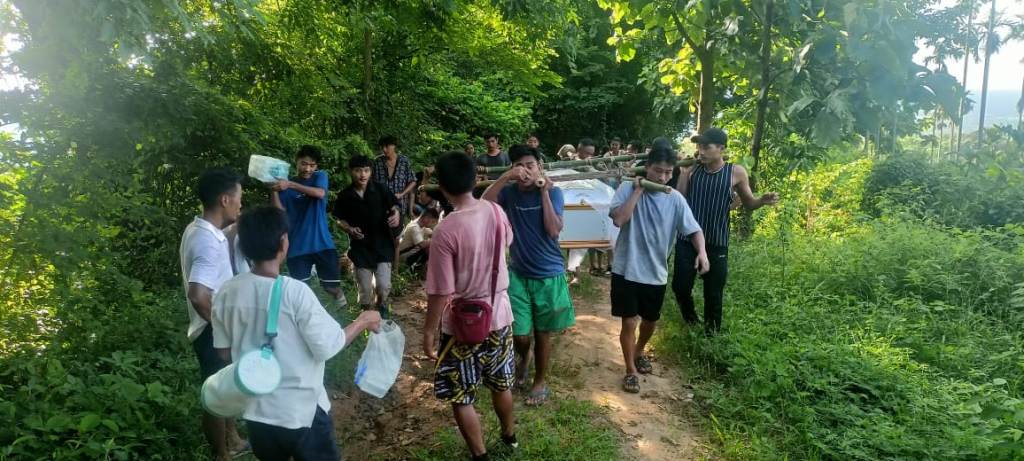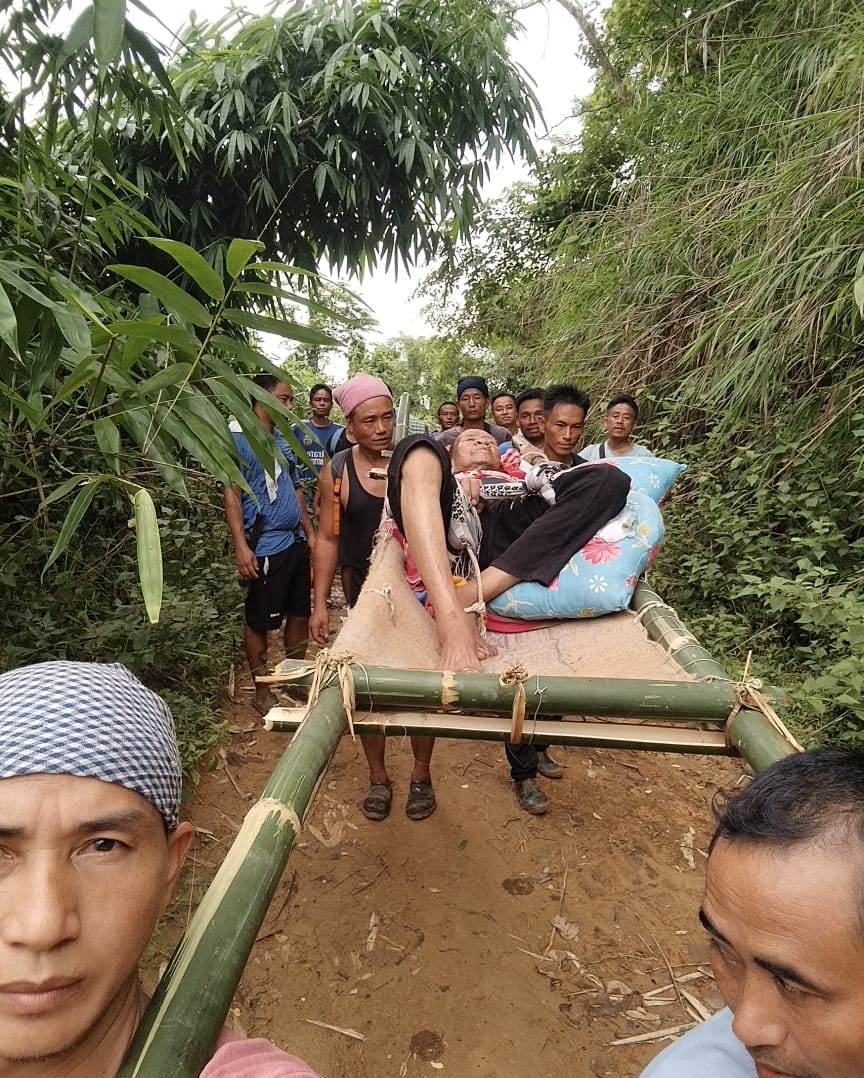Remote Wokha villages in Nagaland still lack motorable roads, forcing residents to carry the sick and deceased on foot.
Published on Aug 8, 2025
Share

WOKHA — Several remote villages in Wokha district remain without motorable roads, forcing residents to rely on footpaths through rugged terrain for essential travel and emergency situations.
On August 7, the body of 82-year-old Tsumongo Yanthan, a former pastor who died in Dimapur, was carried on foot to his native village for the final rites due to the absence of a road. A video of the procession, widely shared on social media, drew public attention and renewed criticism over the lack of infrastructure in the area.
Residents of villages under the 40 Bhandari Assembly Constituency voiced frustration over perceived negligence by elected representatives. Others pointed to shortcomings in village-level governance, criticising the role of the Village Council and Village Development Board in managing local infrastructure.
Also read: Nagaland Governor undergoes minor surgery, recovering in Chennai
In a separate incident on Friday, Hakao Kithan from Champang village sustained a spinal injury in a fall. With no motorable road and heavy monsoon rains making the area inaccessible, villagers carried him on a bamboo stretcher to the Assam border, from where he was taken to Dimapur for treatment.

Bhandari is one of the oldest subdivisions in Nagaland, but continues to be categorised as economically backward. Many villages lack basic infrastructure, including roads, water supply, electricity and medical facilities.
The region also shares the state’s longest border with Assam and often faces recurring border tensions. Without internal road connectivity, villagers remain dependent on Assam’s road network for daily commuting.